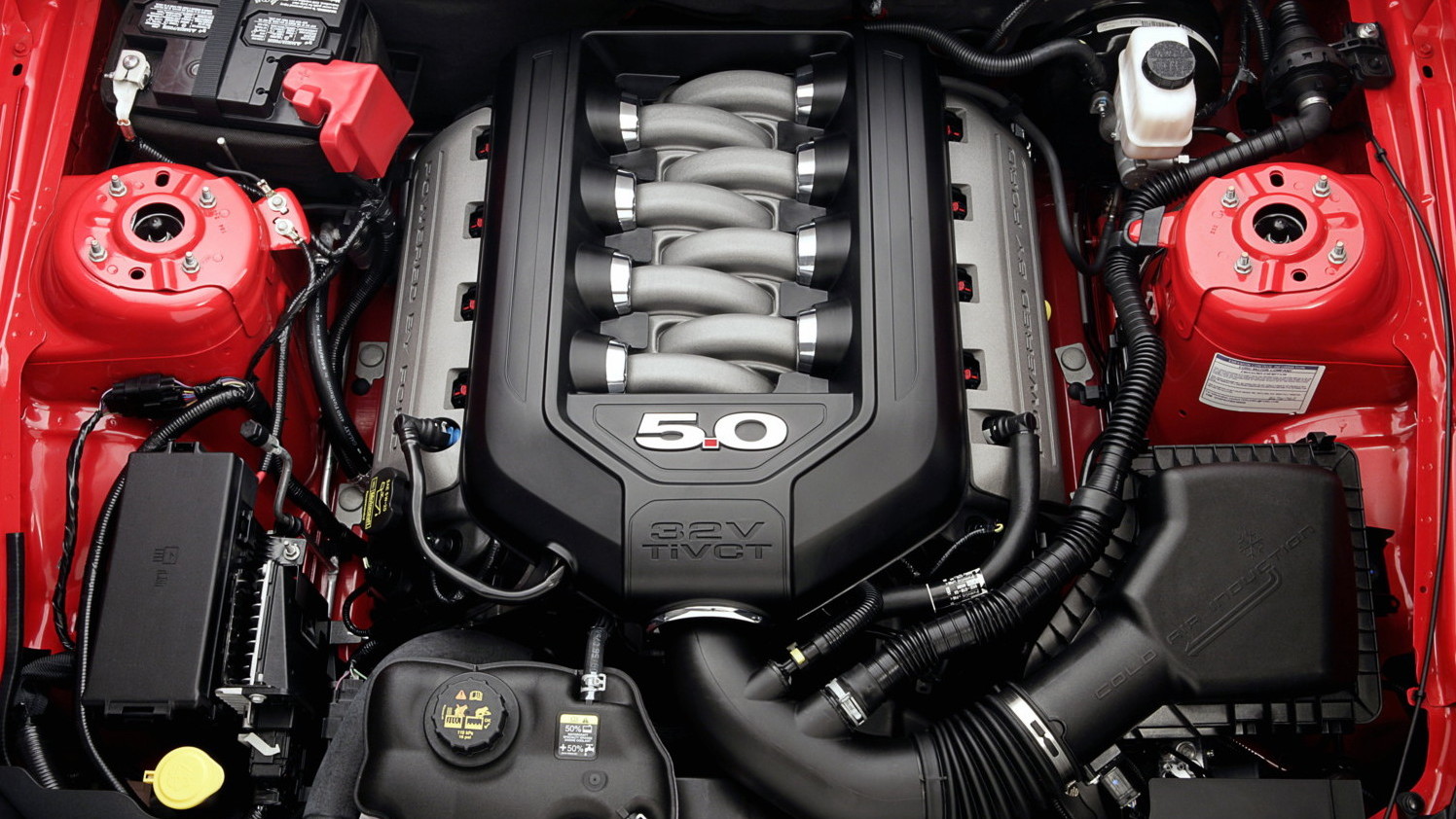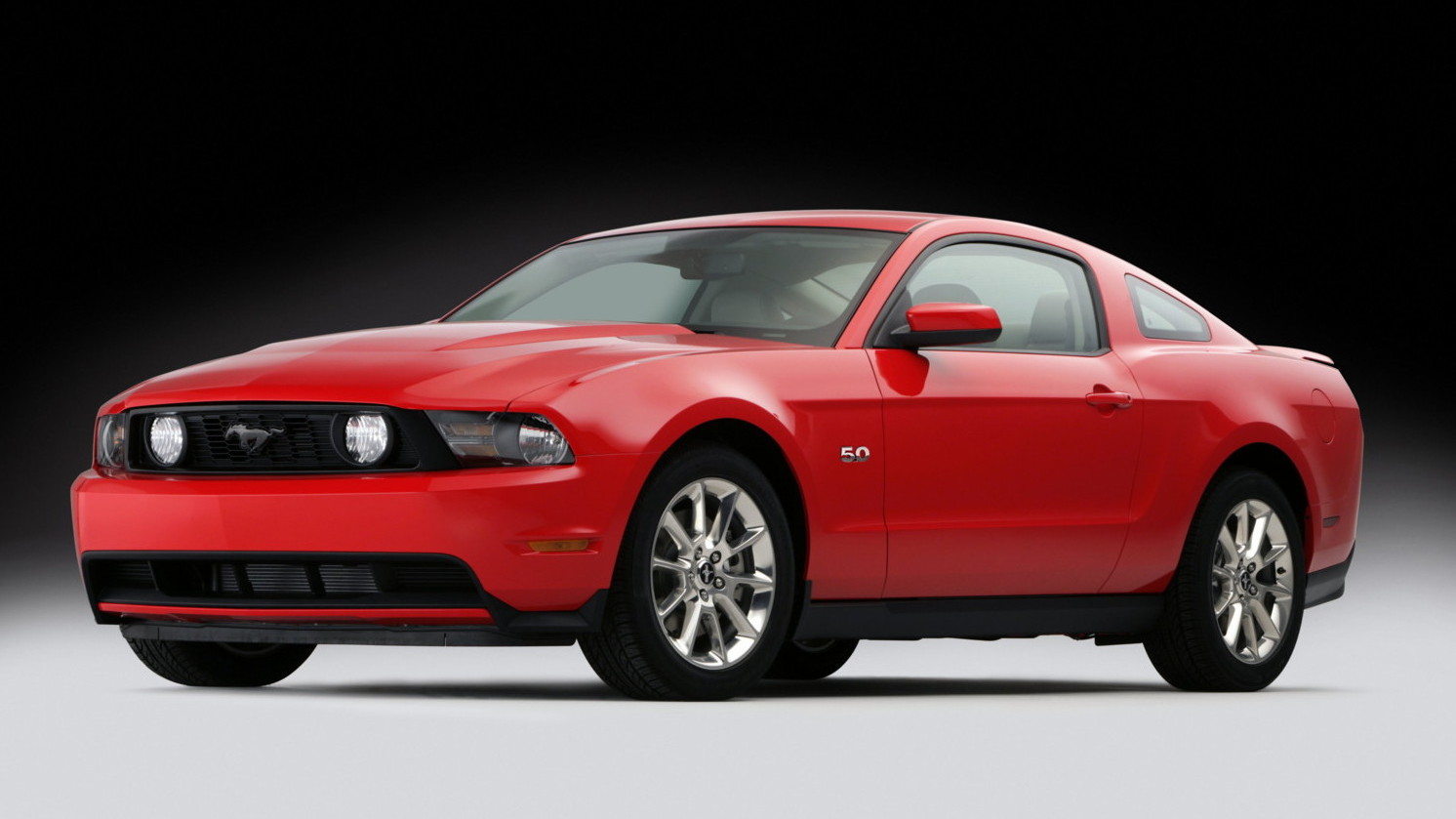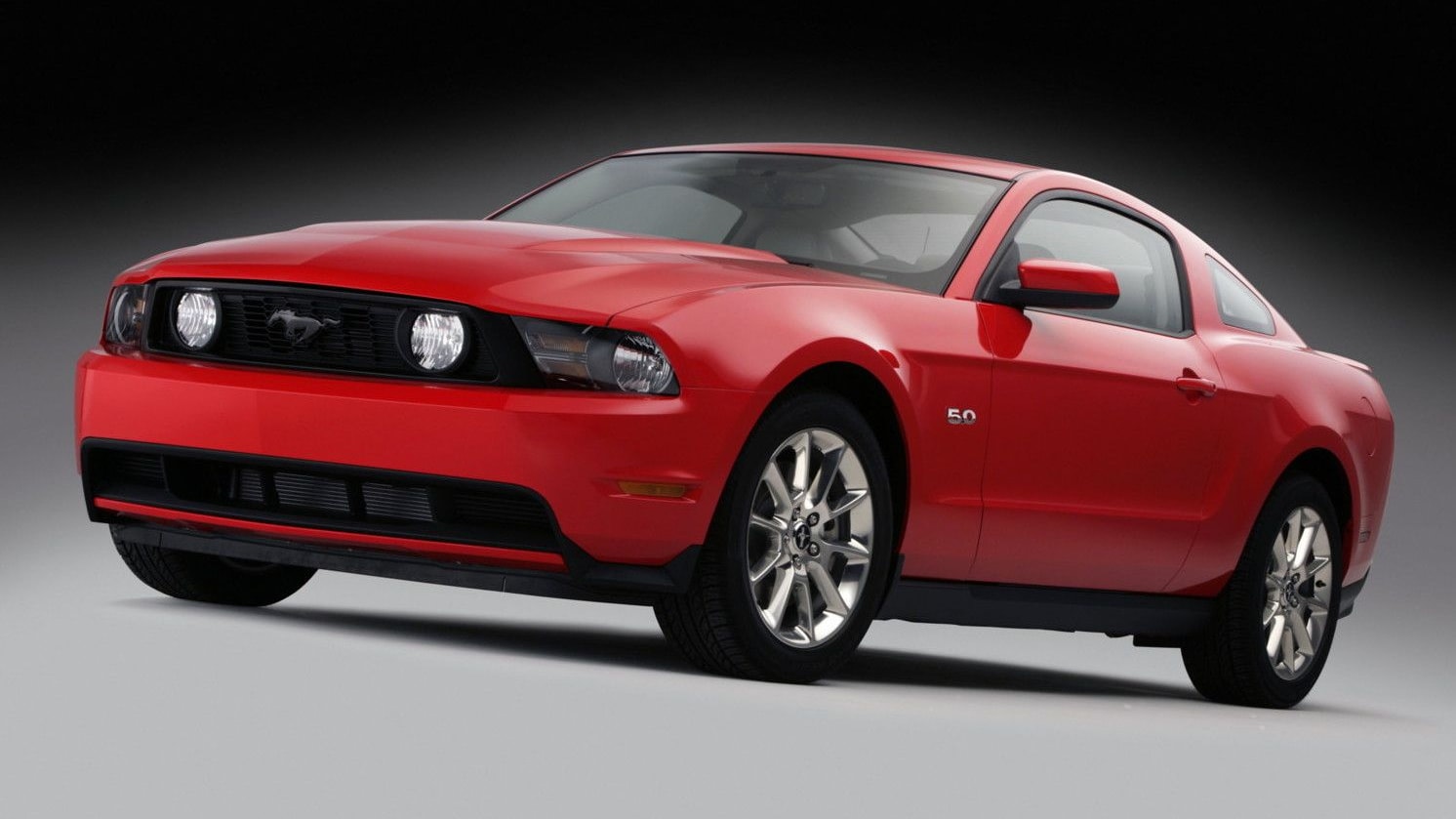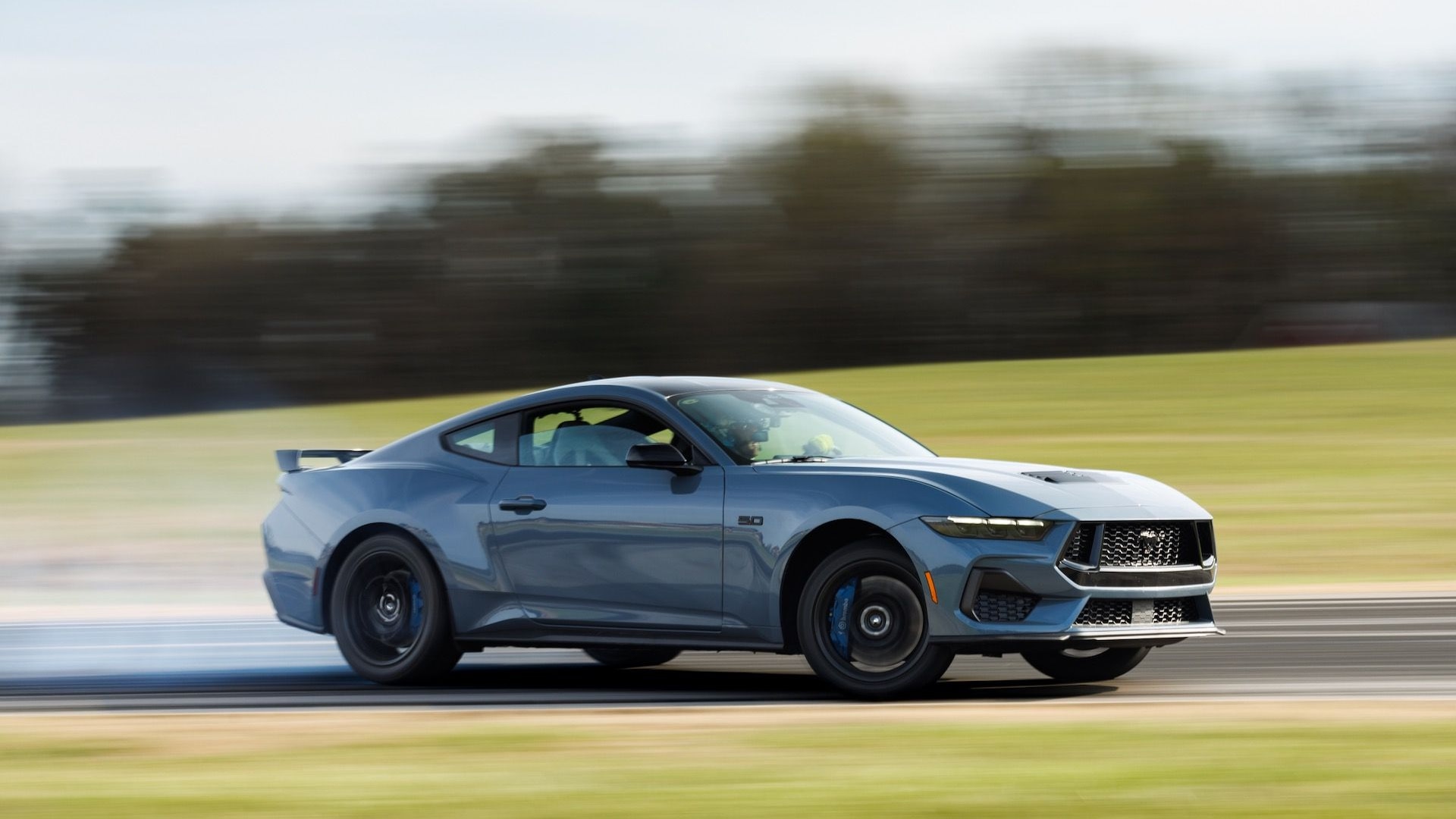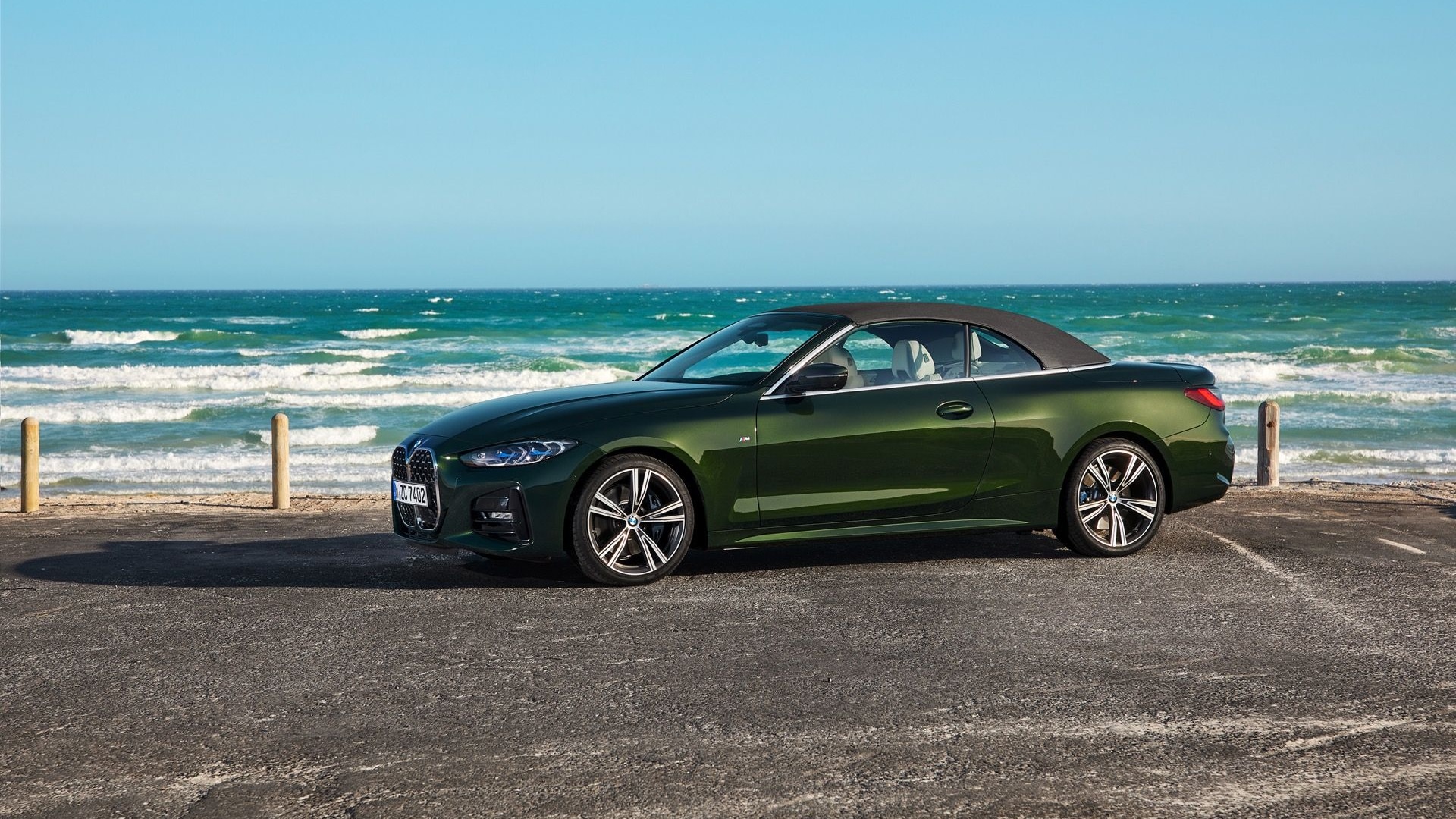A year or two ago, the rumor mill was abuzz with speculation that Ford might offer a version of its EcoBoost V-6 on the 2011 Mustang—and it might even replace the V-8.
Ford certainly won’t deny that they’ve been looking at the possibility of an EcoBoost Mustang, but it just isn’t in the works for now, or for the next model year or two.
For now, there are two very strong and fuel-efficient engines to be proud of in the 2011 Mustang. A new 305-horsepower, 3.7-liter V-6 powers the Mustang. Ford has said that the V-6 Mustang is the only production vehicle that makes more than 300 horsepower and also goes more than 30 miles per gallon. And the Mustang GT packs a new 412-horsepower, 5.0-liter V-8 that will turn up the heat against the Chevrolet Camaro SS.
New V-6 is all in the family—and thoroughly modern
While we’ve brought you quite a few details on the new V-8, there’s more background on the V-6 to be told. For those who are wondering, the new V-6 shares its block and some of the lower pieces of the engine with the Ford-designed engine that’s installed in the Mazda CX-9 and Mazda6, but it has completely different cylinder heads and ancillaries. It also shares most of the moving bottom-end components—including crank and even bearings—with the EcoBoost 3.5-liter that’s in the Ford Taurus SHO, Ford Flex, and many other Lincoln and Ford products already. That engine is rated up to 365 hp and 350 pound-feet of torque.
The new V-6 however uses something that neither the EcoBoost V-6 nor the Mazda naturally aspirated V-6 get: Ford’s new TI-VCT. With computer-controlled solenoids that fine-tune oil pressure passages to vary intake or exhaust cam timing by up to 50 degrees total, Ford engineers boast that the system is infinitely variable and has one of the widest ranges of adjustability for emissions, fuel economy, and performance.
Now, while the heads are different between the EcoBoost V-6 and the new Duratec 37, as the new engine is unceremoniously called, it wouldn’t be a big deal at all, packaging-wise, to incorporate turbocharging plus TI-VCT in the same engine (along with direct-injection, which Ford opted not to install in this vehicle for some very sensible reasons).
Ford is soon introducing an engine with both, actually. The 2.0-liter EcoBoost four-cylinder that’s in the works for a number of models, including the 2011 Ford Edge, will incorporate both.
There’s hope for a turbo ‘Stang yet
As for an EcoBoost four-cylinder engine in the Mustang, don’t even think about it. Ford officials said that’s not even on the table. One company spokesman called the four-cylinder Mustangs of yore “a concession to fuel economy regulations,” and what they could do at the time, but pointed to the much-improved ratings of the new V-6 and V-8. Ford clearly isn’t seeking such mass appeal for the Mustang today as then, either.
The concept of a boosted-up base engine might remind some of the Mustang SVO, a limited-edition model that ran for only three model years in the 1980s (1984 to 1986) and packed a turbocharged four-cylinder engine that could in some tests beat the 5.0-liter V-8 of the time. Now that the Mustang has a great base engine, a boosted V-6 special edition might make sense.
While a real production V-6 turbo is still only a possibility, this time around Ford is actively encouraging tuners to go with turbocharging rather than supercharging, as it both appeals to a younger tuner crowd and goes hand-in-hand with the automaker’s newfound emphasis on turbocharging.
Tuners likely creating their own not-so-eco boosts
You can bet a number of tuners are preparing kits and cars that allow the V-6—and possibly the new V-8—to make more power through turbocharging.
And we caught a very strong hint of where the GT500 is headed?
Stay tuned. We’ll have full driving impressions on the new 2011 Ford Mustang models in just a few days; in the meantime, check out our ranch full of Mustang coverage.
